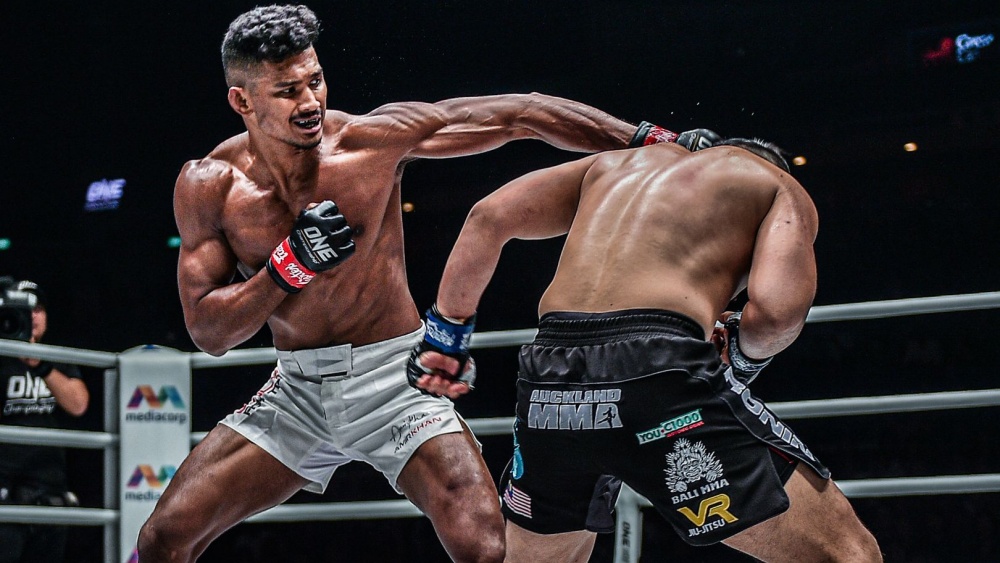How to Train Like a Professional MMA Fighter
How to Train Like a Professional MMA Fighter
Blog Article

Training like a professional MMA (Mixed Martial Arts) fighter requires a combination of physical, technical, and mental preparation. To achieve the level of fitness and skill seen in top MMA fighters, you must focus on several core areas, including strength, endurance, skill development, and recovery. Here is a breakdown of what a professional MMA fighter’s training routine might look like:
Strength and Conditioning
MMA fighters need a strong foundation in both strength and conditioning. This involves exercises that build overall body strength, explosive power, and cardiovascular endurance. deposit togel 5000
Strength Training
Strength training is crucial for every fighter. It helps in building the power needed for grappling, striking, and clinching. Here’s how to structure your strength training:
Compound Movements: Focus on exercises like squats, deadlifts, bench presses, and overhead presses to work multiple muscle groups at once.
Bodyweight Exercises: Push-ups, pull-ups, dips, and lunges will help improve your body control, balance, and endurance.
Olympic Lifts: Incorporating power cleans and snatches into your routine helps build explosive power, which is key for striking and takedowns.
Cardio Conditioning
MMA fighters need both anaerobic and aerobic conditioning to sustain high-intensity effort over the course of a fight.
High-Intensity Interval Training (HIIT): Short bursts of intense exercise followed by rest periods. This simulates the high-energy bursts and rest periods experienced in an MMA fight.
Long-Distance Running: While HIIT builds explosive energy, steady-state running improves cardiovascular endurance.
Swimming: A low-impact form of cardio that builds both endurance and strength.
Skill Development
MMA is a complex sport that combines several martial arts disciplines, so mastering the fundamentals in multiple areas is essential.
Striking
Boxing: Work on footwork, head movement, and combinations. Boxing helps improve your ability to land clean strikes and avoid punches.
Muay Thai: Focus on clinching, elbows, knees, and kicks. Muay Thai is especially important for close-range striking.
Kickboxing: Combining elements of boxing and Muay Thai, kickboxing helps develop powerful punches and kicks, and it works on defensive techniques like blocking and parrying.
Grappling
Brazilian Jiu-Jitsu (BJJ): BJJ is the cornerstone of ground fighting in MMA. Practice submissions, escapes, sweeps, and guard positions.
Wrestling: Focus on takedowns, takedown defense, and control from both the top and bottom positions. Wrestling is essential for dictating where the fight takes place.
Judo: Work on throws and trip takedowns to control your opponent’s positioning and keep them off balance.
Clinch Work
The clinch is a critical aspect of MMA that requires strength and technique. Work on controlling your opponent in close quarters and landing strikes from the clinch. Practice knee strikes, trips, and throws.
Sparring and Live Training
Sparring is where you put your skills into practice. However, to avoid injury, it’s important to spar under the supervision of an experienced coach and in a controlled environment.
Striking Sparring: Focus on landing clean punches, kicks, and knees while defending effectively. Work on timing and accuracy.
Grappling Sparring: Spar in BJJ or wrestling, focusing on transitions, escapes, submissions, and top control.
MMA Sparring: This is where you combine everything: striking, wrestling, BJJ, and clinch work.
Flexibility and Mobility
A flexible fighter is a versatile fighter. Working on mobility and flexibility prevents injuries and helps you move efficiently during a fight. Incorporate dynamic stretching before workouts and static stretching afterward to improve flexibility. Mobility drills can enhance your range of motion, helping with transitions during grappling exchanges or striking.
Mental Conditioning
A professional MMA fighter’s mindset is just as important as physical training. The mental aspect of training involves staying disciplined, focused, and emotionally controlled under pressure.
Visualization: Spend time visualizing yourself in a fight, performing techniques, and seeing yourself succeeding. This helps build confidence.
Meditation: Meditation helps reduce stress, improve focus, and control anxiety before a fight.
Goal Setting: Set both short-term and long-term goals to measure your progress and keep you motivated.
Pressure Training: Practice fighting under stressful conditions to mimic the pressure of competition.
Nutrition and Diet
A fighter’s diet plays a huge role in their performance and recovery. Proper nutrition ensures that you have the energy to train and the nutrients to recover.
Macronutrient Balance: Focus on a diet rich in lean proteins (chicken, fish, eggs), complex carbohydrates (sweet potatoes, brown rice), and healthy fats (avocados, nuts).
Hydration: Drink plenty of water throughout the day to stay hydrated, especially during intense training.
Supplements: While whole foods should be your primary source of nutrition, supplements such as whey protein, creatine, and BCAAs can support muscle recovery and performance.
Recovery and Rest
Training hard is important, but recovery is just as essential to avoid burnout and injury.
Sleep: Ensure you’re getting 7-9 hours of sleep each night for muscle repair and overall recovery.
Active Recovery: Light activities like walking, swimming, or yoga can help alleviate soreness and improve circulation.
Massage and Foam Rolling: Regular massages and foam rolling help reduce muscle tension and improve flexibility.
Ice Baths and Cryotherapy: These can help reduce muscle inflammation and speed up recovery after intense workouts.
Fight Simulation
To prepare for an actual fight, it’s essential to simulate fight conditions. This can include:
Fight Camps: Fighters typically enter a focused training camp several weeks before a fight, where they train more intensely and fine-tune their skills.
Mock Fights: Have sparring sessions that mimic the intensity, pace, and stress of a real fight, while still maintaining safety.
Game Plan Practice: Work with your coach to develop strategies and rehearse them in practice.
Conclusion
Training like a professional MMA fighter involves balancing intense physical conditioning, skill development, and mental preparedness. It’s a demanding and multifaceted process that requires consistent effort and dedication. By combining strength, conditioning, technical skills, recovery, and mental focus, you can improve your performance and get closer to competing at a professional level. Remember, every fighter’s journey is unique, so it’s essential to tailor your training regimen to your individual needs, goals, and physical condition.